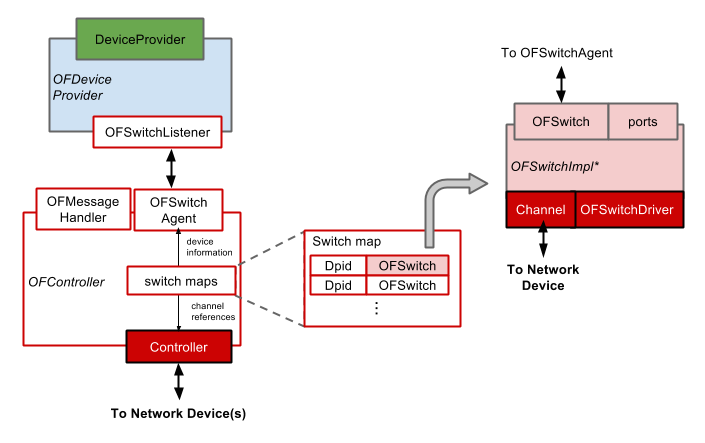This section describes the function and structure of the Device subsystem, including a detailed look at the OpenFlow facilities.
Overview
The Device subsystem is responsible for discovering and tracking the devices that comprise the network, and for enabling operators and applications to control them. Most of ONOS's core subsystems rely on the the Device and Port model objects created and managed by this subsystem, and/or its provider for interacting with the network.
The Device subsystem follows the architecture described in System Components, with a DeviceManager capable of interfacing with multiple DeviceProviders, each with support of their own network protocol libraries or means to interface with the network. This section focuses on the aptly named OpenFlowDeviceProvider, used by ONOS to interact with OpenFlow networks. The OpticalConfigProvider, used to read in network configurations for optical networks, will be described as part of the [Packet Optical use case].
Model Objects and Provider Representations
Recall that ONOS represents various network components and properties as protocol-agnostic model objects at the core tier, and as protocol-specific objects at the provider tier. The following are the major representations translated across the two tiers:
| DeviceManager | OpenFlowDeviceProvider |
|---|---|
Device | OpenFlowSwitch |
DeviceId/ElementId | Dpid |
Port | OFPortDesc |
MastershipRole | RoleState |
The OpenFlow Subsystem
The following figure summarizes the key components of the OpenFlow southbound, comprised of the OpenFlowDeviceProvider and the OpenFlow driver components. While not a subsystem in the ONOS Service sense, we will refer to these components collectively as the OpenFlow subsystem.
